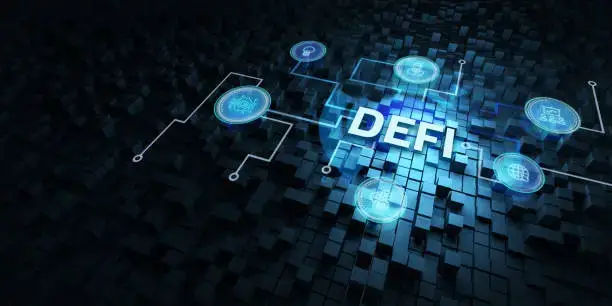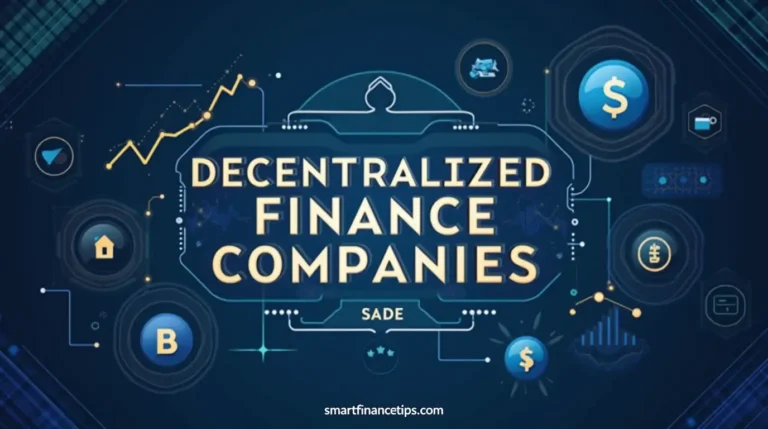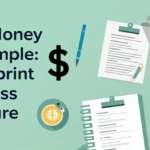The Best Fluffy Pancakes recipe you will fall in love with. Full of tips and tricks to help you make the best pancakes.
Table of Contents
Introduction to Decentralized Finance

Decentralized finance, commonly referred to as DeFi, represents a paradigm shift in financial services, utilizing blockchain technology to create an open and permissionless financial ecosystem. Unlike traditional financial systems that rely on intermediaries such as banks and brokers, DeFi empowers individuals by enabling direct transactions between parties through smart contracts. This effective use of technology ensures that financial services like lending, borrowing, trading, and saving are accessible to anyone with an internet connection.
The emergence of DeFi can be traced back to the launch of Ethereum in 2015, which allowed developers to create decentralized applications (dApps) that interact with smart contracts. do you need a business license to do freelance work; This innovative approach has spurred rapid growth and diversity within the sector, leading to the development of various DeFi tools and platforms that cater to a wide range of financial needs. As of 2023, the DeFi landscape has expanded significantly, with billions of dollars locked in various financial protocols, showcasing a burgeoning market that challenges conventional finance.
The foundational principles of decentralized finance lie in its transparency, security, and inclusivity. Unlike traditional financial services that often operate behind closed doors, DeFi transactions are recorded on public blockchains, enabling anyone to verify and audit the data. Furthermore, the security aspect stems from blockchain’s inherent features, making it difficult for bad actors to tamper with the system. Importantly, DeFi strives for inclusivity by removing barriers to entry, allowing unbanked individuals and marginalized communities to access crucial financial services that were previously out of reach.
In the broader context of financial services, DeFi signifies a pivotal evolution in how economies function, democratizing access to finance and fostering innovation in the financial industry. This transformative movement not only enhances efficiency but also promotes a sustainable financial ecosystem that can adapt to the needs of a diverse global population.
The Core Components of DeFi
Decentralized Finance, commonly referred to as DeFi, is transforming the landscape of financial transactions through its unique structure that emphasizes transparency, accessibility, and efficiency. At the heart of this revolutionary ecosystem are three core components: smart contracts, decentralized applications (dApps), and blockchain protocols. Each of these elements plays a pivotal role in facilitating the seamless functioning of DeFi.
Smart contracts are self-executing contracts with the terms of the agreement directly written into code. They operate on blockchain networks and automatically enforce and execute agreements once predetermined conditions are met. This eliminates the need for intermediaries, reducing costs and enhancing trust among parties involved. Their programmability allows for the creation of complex financial instruments, which are crucial to the DeFi ecosystem.
Decentralized applications (dApps) leverage smart contracts to provide various financial services, such as lending, borrowing, and trading, without the constraints of traditional finance. Unlike conventional web applications, dApps operate on a decentralized network, improving accessibility for users globally. They offer an array of functionalities, from decentralized exchanges (DEXs) that facilitate peer-to-peer trading of cryptocurrencies to lending platforms that enable users to earn interest on their holdings.
In addition to smart contracts and dApps, blockchain protocols form the underlying infrastructure necessary for DeFi’s operation. These protocols, including Ethereum and Binance Smart Chain, offer the framework upon which smart contracts and dApps are built. Each blockchain protocol has its own unique features that contribute to the overall functionality of the DeFi ecosystem, such as transaction speed, costs, and security measures.
Ultimately, the interconnectedness of smart contracts, dApps, and blockchain protocols creates a robust ecosystem that empowers users by providing them with unprecedented control over their financial activities. The synergy among these core components is what makes the vision of Decentralized Finance a tangible reality, positioning it as a vital evolution in the financial technology space.
Benefits of Decentralized Finance

Decentralized Finance (DeFi) represents a significant shift in the landscape of financial transactions, offering various benefits that make it an increasingly attractive alternative to traditional finance methods. One of the primary advantages is increased accessibility. DeFi platforms operate on the principles of blockchain technology, allowing individuals worldwide to access financial services without geographical restrictions or the need for intermediaries. This enhanced accessibility has proven vital for underserved populations who previously relied on traditional banking, often marked by high fees and prohibitive entry requirements.
Another notable benefit of DeFi is the reduction in transaction fees. Traditional financial institutions generally impose various fees tied to banking services, such as wire transfers or account maintenance. DeFi utilizes smart contracts to automate and facilitate transactions efficiently, which significantly lowers costs. Users can execute peer-to-peer transactions for a fraction of the fees associated with traditional counterparts, making financial transactions more economical for everyday users.
Transparency is also a hallmark of DeFi platforms. Transactions on decentralized networks are recorded on public ledgers, which are auditable by any user, fostering confidence and trust in these financial systems. The open nature of transactions allows for enhanced scrutiny, reducing the risk of fraud and corruption, which is a common concern in traditional finance. Furthermore, this level of transparency ensures participants are aware of the protocols and rules governing their transactions.
Lastly, DeFi emphasizes financial inclusivity. By providing individuals with tools and resources to engage in lending, borrowing, and trading without the barriers typically imposed by banks, DeFi platforms empower marginalized groups. For example, in regions where traditional banks are reluctant to extend credit, decentralized lending protocols enable individuals to access funds. This democratization of finance has the potential to transform economies by fostering innovation and growth among those previously excluded.
Risks and Challenges in DeFi
Decentralized Finance (DeFi) offers a transformative shift in the financial landscape, yet it is not without its risks and challenges. One of the primary concerns is the vulnerability of smart contracts. These self-executing contracts are prone to coding errors, which can be exploited by malicious actors. A notable example includes the numerous hacks reported across various DeFi platforms, often due to unforeseen bugs in smart contract code. Such vulnerabilities can result in significant financial losses for users and undermine confidence in the ecosystem.
Another critical challenge is the regulatory uncertainty surrounding DeFi. As a relatively new sector, regulatory frameworks have not yet fully adapted to the complexities of decentralized platforms. This lack of clear governance can lead to operational risks, especially if regulatory bodies decide to impose strict regulations that could hinder innovation or implementation. Furthermore, the ambiguity regarding compliance entails a risk for users as well, who may unknowingly partake in activities that later be deemed illegal. Consequently, the absence of a centralized authority complicates dispute resolution and accountability, making the DeFi space somewhat precarious.
Market volatility also presents a significant risk within the DeFi sector. Users often invest in tokens and cryptocurrencies whose prices can fluctuate dramatically. This volatility can lead to sudden losses, particularly when leveraged trading is involved, as it magnifies the effects of price changes. Moreover, the speculative nature of many DeFi projects can exacerbate this issue, leading to bubbles that can burst, resulting in massive financial downturns for investors. In conclusion, while DeFi holds great potential, these risks and challenges must be navigated carefully to ensure a stable and secure financial future.
Popular DeFi Platforms and Protocols

Decentralized Finance (DeFi) has witnessed considerable growth, spawning numerous platforms and protocols that facilitate a wide range of financial services without the need for traditional intermediaries. Prominent among these are Uniswap, Aave, and Compound, each offering unique functionalities that cater to diverse user needs.
Uniswap is a decentralized exchange (DEX) that allows users to swap different cryptocurrencies directly from their wallets. It utilizes an automated market-making (AMM) model, where liquidity providers contribute tokens to liquidity pools and earn fees from trades. Uniswap’s user-friendly interface and seamless experience make it a favorite for both novice and experienced traders. Furthermore, its commitment to transparency and security reinforces its standing within the DeFi ecosystem.
Aave is a leading lending protocol that enables users to lend and borrow a variety of cryptocurrencies. Its standout feature is the ability to earn interest on deposited assets while borrowers can leverage their holdings for further investments. Aave introduces innovative features such as “flash loans,” which provide uncollateralized loans for short periods, allowing users to capitalize on temporary investment opportunities. This protocol not only enhances borrowing efficiency but also raises the bar for decentralized financial services.
Compound is another significant player in the DeFi space, operating as a blockchain-based money market that helps users lend or borrow assets with interest rates determined algorithmically. Users can supply tokens to earn interest, while borrowers can access collateralized loans. The introduction of “COMP” tokens allows users to earn governance rights, creating a community-driven approach to protocol development. Compound’s structure illustrates the potential for decentralized systems to innovate traditional finance concepts.
In summary, Uniswap, Aave, and Compound exemplify the transformative potential of DeFi platforms, each contributing essential functionalities that cater to users’ diverse financial needs while fostering a more open and democratized financial landscape.
How to Get Started with DeFi
Decentralized Finance (DeFi) represents a transformative shift in how we engage with financial systems, making it essential for newcomers to understand how to navigate this evolving landscape. The first step in your DeFi journey is selecting a cryptocurrency wallet. Wallets can be categorized into custodial and non-custodial options; custodial wallets hold your private keys for you, while non-custodial wallets provide you full control. Popular options like MetaMask and Trust Wallet ensure a balance of security and accessibility, allowing users to manage their digital assets effectively.
Once you have set up a wallet, the next step is engaging with decentralized applications (dApps). These platforms enable various financial services, ranging from lending and borrowing to yield farming. To explore dApps, you may consider accessing platforms such as Uniswap for trading or Aave for lending. Familiarizing yourself with the interface and functionality of these dApps will aid in developing your understanding of the DeFi ecosystem.
A crucial aspect of participating in DeFi is understanding liquidity pools. Liquidity pools are collections of funds locked in smart contracts, enabling users to provide liquidity to exchanges in return for transaction fees and rewards. As you venture into liquidity provisioning, consider starting with smaller amounts to mitigate risk while gaining experience. Research the projects behind the liquidity pools to ascertain their credibility and potential yields.
Best practices for trading and investing in DeFi include thorough research, continuous education, and careful risk management. Leveraging social media outlets and forums can provide insight into emerging trends and community sentiments. Moreover, diversifying your investments can help mitigate risks associated with volatility. Overall, with the right tools and knowledge, newcomers can successfully navigate the DeFi landscape and harness its potential for revolutionary financial transactions.
The Future of Decentralized Finance

As decentralized finance (DeFi) continues to evolve, the potential for a transformative impact on the financial landscape is becoming increasingly evident. Innovations driven by blockchain technology, including smart contracts and automated systems, are expected to significantly streamline financial transactions, making them more efficient and accessible. Emerging technologies, such as artificial intelligence and machine learning, will likely enhance the capabilities of DeFi platforms, enabling them to offer personalized financial services and predictive insights. These advancements may lead to the development of more sophisticated financial products that cater to a diverse range of consumers and businesses.
Regulatory developments will also play a crucial role in shaping the future of decentralized finance. As governments around the world begin to recognize the implications of DeFi, there may be a push for regulatory frameworks that strike a balance between innovation and consumer protection. Such regulations could foster greater confidence among users and institutions, encouraging wider adoption of DeFi solutions. It is essential for industry stakeholders to engage with regulators to ensure that emerging compliance requirements do not stifle innovation but rather support the sustainable growth of the DeFi ecosystem.
Moreover, the implications of DeFi extend beyond financial transactions to broader economic models. Traditional financial institutions may need to adapt to the growing influence of decentralized alternatives, which could challenge conventional lending and borrowing practices. The democratization of financial services offered by DeFi can empower underserved populations and enable a more inclusive financial system. As individuals and businesses gain access to a range of decentralized financial services, the potential for economic growth and innovation may be significantly enhanced.
Case Studies: DeFi in Action
Decentralized Finance (DeFi) has rapidly gained traction, transforming traditional financial systems through innovative applications that leverage blockchain technology. Several successful DeFi projects provide compelling illustrations of how this paradigm shift is reshaping financial transactions and offering new opportunities for users.
One noteworthy example is MakerDAO, which allows users to borrow funds using their cryptocurrency as collateral. This system operates through a stablecoin called DAI, which maintains its value through an algorithmic mechanism. The success of MakerDAO highlights the potential for eliminating intermediaries in lending and borrowing processes, enabling users to access liquidity without traditional banking constraints. Importantly, this case also underscores the importance of smart contract security, as vulnerabilities could lead to significant losses.
Another significant case is Uniswap, a decentralized exchange (DEX) that allows users to trade cryptocurrencies directly from their wallets. By employing an automated market maker (AMM) model, Uniswap enhances liquidity provision while reducing reliance on order books. This has democratized access to trading and transformed how users interact with their assets. Despite its success, the Uniswap case also illustrates challenges, such as regulatory scrutiny and the risks associated with impermanent loss for liquidity providers.
Curve Finance is another notable project focused on efficient stablecoin swaps. The platform utilizes a unique liquidity pool mechanism that prioritizes low slippage. This innovation showcases how DeFi can refine trading efficiency for specific asset categories. However, the Curve Finance experience also emphasizes the need for ongoing audits and risk assessments to protect users from potential exploits in complex smart contracts.
These case studies reinforce that while DeFi presents exciting opportunities for users, it is essential to navigate the associated risks carefully. The successes of MakerDAO, Uniswap, and Curve Finance serve as valuable lessons in the continuity of innovation, regulation, and user education within the DeFi space.
Conclusion: Embracing the DeFi Revolution
As we have explored throughout this blog post, decentralized finance (DeFi) represents a groundbreaking shift in the financial landscape. By removing intermediaries, DeFi platforms empower individuals to take control of their financial transactions and assets, enhancing accessibility and inclusivity. This transformative potential allows a broader population to engage in lending, borrowing, and investing without traditional barriers, reshaping our understanding of financial services.
The core technologies underlying DeFi, such as blockchain and smart contracts, provide a transparent and secure environment that fosters trust among users. This revolution not only democratizes access to financial products but also introduces innovative features like liquidity pools and yield farming, presenting users with unique opportunities for wealth generation. Moreover, DeFi’s adaptability ensures the continuous evolution of financial services, meeting the needs of a rapidly changing global economy.
As the DeFi ecosystem continues to mature, it is imperative for individuals to remain informed and engaged. Keeping abreast of the latest developments and trends within the DeFi sector will empower users to make sound financial decisions. With the potential risks associated with investing in DeFi, including volatility and security concerns, a cautious and well-informed approach is essential for harnessing the benefits of this innovative financial paradigm.
In conclusion, the DeFi revolution is not just a fleeting trend but a significant shift that heralds a new era of financial transactions. Embracing this change and exploring the opportunities within decentralized finance can lead to a more equitable and efficient financial future. As we stand on the cusp of this transformation, active participation and a commitment to continuous learning are vital for navigating the ever-evolving DeFi landscape.
Did You Like Our Article
i like this poste you help me
. We encourage readers to take actionable steps towards establishing their emergency fund, making a commitment to their financial future. Doing so is not just a precaution; it is a proactive strategy that lays the groundwork for a secure and stress-free financial life.
ai monetization artificial intelligence behavioral economics blogging guide bubble cryptocurrency budgeting strategies budget management business business days business license business plan business plans cryptocurrency creation debt management debt strategies decentralized finance earn money finance development financial app financial planning fintech services freelance business freelancing business home earnings investment methods investment stocks invest stocks marketing services money blogging money management money online personal budget personal budgeting personal data personal finance real estate remote work side business small business start start business stock investment stock market stock trading successful businesses
Decentralized Finance: Top Platforms to Be Use Now 101
Decentralized finance, commonly referred to as DeFi, represents a paradigm shift in financial services, utilizing blockchain technology to create an open and permissionless financial ecosystem. Unlike traditional financial systems that rely on intermediaries such as banks and brokers, DeFi empowers individuals by enabling direct transactions between parties through smart contracts. This effective use of technology ensures that financial services like lending, borrowing, trading, and saving are accessible to anyone with an internet connection.








